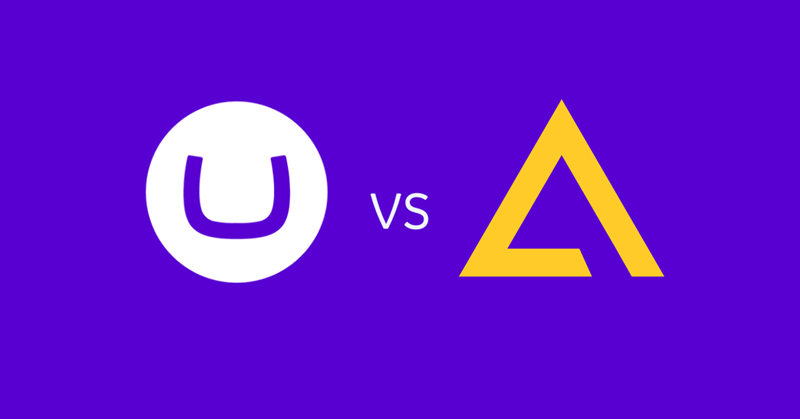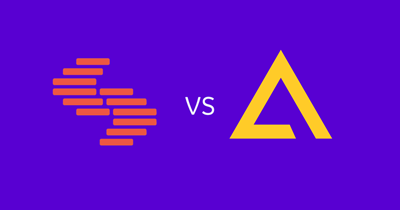Umbraco vs Agility CMS

Navigating the landscape of headless content management systems (CMS) is crucial for businesses looking to establish a strong digital presence. Among the numerous options available, Umbraco and Agility CMS stand out as prominent contenders, each with its own features, capabilities, and strengths.
As organizations seek the ideal CMS to power their websites, applications, and digital experiences, a comprehensive comparison between Umbraco and Agility CMS is essential. By delving into their respective offerings, functionalities, and suitability for various business needs, this comparison aims to provide valuable insights for making informed decisions. Whether you're a developer, marketer, or decision-maker, understanding the nuances of Umbraco and Agility CMS will help you determine which platform aligns best with your goals and aspirations for a successful digital journey.
Agility CMS: Empowering Digital Experiences Through Innovation
Agility CMS is a transformative solution bridging the gap between technical excellence and seamless content experiences. With a commitment to delivering unmatched value to organizations across various industries, Agility CMS redefines the content management landscape with its unique blend of features and capabilities.
Empowering Marketers with Intuitive Control:
Agility CMS understands that effective content management requires collaboration between developers and marketers. Our platform is designed to empower marketers with intuitive tools to manage and optimize content without requiring extensive technical expertise. By offering an intuitive interface for content creation, editing, and personalization, Agility CMS streamlines the process and enhances collaboration, ensuring that content strategies align seamlessly with business objectives.
Elevating Content Management:
Agility CMS excels in handling diverse and complex content scenarios. From multimedia-rich pages to intricate product catalogs, our platform's flexible architecture enables the creation of immersive digital experiences while maintaining content integrity and superior performance. This capability ensures that your content remains engaging and impactful, driving higher user engagement and conversions.
Customization Without Complications:
While providing powerful features, Agility CMS remains user-friendly and adaptable. Our platform is built to accommodate customization needs without overcomplicating the process. Whether you're a developer looking to extend functionality or a content editor seeking a tailored experience, Agility CMS ensures that customization is efficient and hassle-free.
Seamless Multilingual Content Management:
Agility CMS understands the global nature of businesses today. With robust multilingual content management capabilities, our platform facilitates creating, translating, and deploying content across various languages. This ensures that your digital presence resonates with diverse audiences while maintaining consistency and authenticity across different regions.
Headless Architecture for Omnichannel Experiences:
Agility CMS's headless architecture is more than a trend—it's a strategic choice that empowers businesses to deliver content consistently across various platforms and devices. By decoupling the front-end presentation from the content management back end, Agility CMS enables marketers to create personalized experiences tailored to each user's context, enhancing engagement and satisfaction.
Continuous Innovation and Future Readiness:
Agility CMS is committed to staying ahead of industry trends and technological advancements. Our platform is built on a foundation that embraces innovation, ensuring you have the tools and capabilities to adapt to evolving user expectations and technological shifts. This future-ready approach empowers your organization to remain competitive and relevant in a rapidly changing digital landscape.
In summary, Agility CMS is a testament to the possibilities of a content management system that seamlessly blends innovation, flexibility, and ease of use. By focusing on intuitive control, content management excellence, customization without complications, multilingual support, omnichannel experiences, and continuous innovation, Agility CMS transforms the way organizations craft and deliver digital experiences. Ultimately, our platform empowers businesses to engage audiences, drive growth, and thrive in the digital age.
What is Umbraco?
Umbraco stands as an open-source .NET Core CMS.
Umbraco's core strength lies in its adaptability, offering significant control over website features. It provides two distinct products catering to diverse needs:
- Umbraco Cloud: Offering Azure Cloud hosting, automated updates, and streamlined workflows.
- Umbraco Heartcore: A headless CMS with managed APIs, GraphQL support, CDN integration, and more.
Umbraco is celebrated for its flexibility, scalability, and open-source nature. Developers benefit from its code's openness and APIs, enabling seamless integration, extension, and scalability.
At its core, Umbraco empowers users to tailor projects to their vision, offering a clean and tailored approach to suit unique project needs.
Identifying Umbraco's Shortcomings
While Umbraco boasts various features and capabilities, it's important to acknowledge the areas where users have expressed concerns or faced challenges. These insights shed light on the platform's limitations and help organizations make informed decisions when considering its adoption.
Steep Learning Curve:
Despite its flexibility and extensibility, Umbraco can pose a learning curve, especially for newcomers or those without a background in .NET development. Its advanced features may require time and effort to master, potentially making it less suitable for users seeking immediate results.
Limited Built-In Features:
Umbraco differs from other CMS platforms in that it doesn't come pre-loaded with an extensive array of built-in features. Many functionalities necessitate extensions or custom coding, which can lead to a more intricate initial setup and might require technical expertise.
Dependency on .NET:
While leveraging the robustness and security of .NET is advantageous, it also means that working effectively with Umbraco requires familiarity with .NET. This dependence on .NET development skills might limit its accessibility for teams preferring alternative technologies.
Performance Concerns:
Umbraco's ability to handle extensive sites might result in higher server resource requirements, impacting performance. Without optimal configuration, larger sites could experience performance issues.
Documentation and Support:
Some users have cited challenges in finding comprehensive documentation for advanced customizations. Additionally, support may be slower than preferred on certain occasions.
UI and User Experience:
The user interface of Umbraco has been criticized for its dated appearance and confusing elements. Some design details could be improved to enhance the overall user experience.
Migrating Between Versions:
Users have reported challenges and headaches when migrating content between different versions of Umbraco.
Limited Marketplace:
Compared to some other CMS platforms, Umbraco's marketplace for themes, templates, and integrations may be smaller, potentially limiting available choices for customization and expansion.
Learning Curve:
The versatility of Umbraco is accompanied by a learning curve, particularly for those less experienced or new to the platform. While the community and documentation help, some users have found the learning process to be time-consuming.
Front-End Technology:
Some users have raised concerns about Umbraco's use of older front-end technologies like AngularJS, which could impact the development and customization experience.
Umbraco Cloud Reliability:
Users have faced issues with Umbraco Cloud's reliability, including websites going offline unexpectedly, necessitating manual intervention to restore services.
Updates and Compatibility:
Upgrading to newer major releases of Umbraco can be complex and time-consuming, especially for websites with significant customizations.
While Umbraco is a versatile CMS with a strong community and extensive documentation, these shortcomings underline the need for careful consideration based on your project's specific requirements and technical capabilities.
Umbraco vs Agility CMS: A Comparative Analysis of Support, Scalability, and Enterprise Excellence
When selecting the right content management system (CMS) for your digital endeavours, factors such as support, scalability, and suitability for enterprise-level projects play a pivotal role. In this comparison, we'll delve into how Umbraco and Agility CMS stack up in these key areas, shedding light on the strengths and considerations of each platform.
Support and Guidance:
Umbraco: Umbraco boasts an active and vibrant community of developers and users who contribute to discussions, share insights, and provide guidance. However, the level of support may vary based on the complexity of your queries and the availability of community members.
Agility CMS: Agility CMS stands out with its white glove service, setting a new standard for customer support. Our dedicated team is committed to promptly addressing queries, resolving issues, and providing comprehensive guidance throughout your content management journey. This personalized and efficient support ensures you can navigate challenges effectively and capitalize on the platform's capabilities.
Scalability and Performance:
Umbraco: Umbraco offers scalability for projects of varying sizes, but achieving optimal performance at scale may require careful configuration and management. The platform's flexibility may empower developers but also require more effort to ensure seamless scalability.
Agility CMS: Designed with scalability in mind, Agility CMS excels in accommodating projects of enterprise-level complexity. Our cloud-based infrastructure ensures consistent and smooth performance even as your project grows. Whether you're dealing with high traffic, intricate content structures, or global distribution, Agility CMS's scalability ensures your digital experiences remain responsive and reliable.
Enterprise Excellence:
Umbraco: Umbraco's open-source nature makes it accessible and adaptable for businesses of all sizes. While it can cater to enterprise projects, it may require more effort to customize and extend its features to meet complex enterprise requirements.
Agility CMS: Agility CMS is purposefully designed to meet the demands of enterprise-level projects. Our platform offers the necessary scalability and performance and a suite of features tailored to the intricate needs of large organizations. From content governance and multilingual support to comprehensive APIs and customizable workflows, Agility CMS provides the tools needed to execute ambitious enterprise content strategies with precision.
MACH Alliance:
Umbraco: While Umbraco is a powerful CMS, it might require additional customization and integration efforts to fully align with the MACH Alliance principles. Depending on your specific requirements, you might need to invest time and resources in building integrations with other MACH-compliant systems to create a seamless and modular tech stack.
Agility CMS: Agility CMS is a proud member of the MACH Alliance, which reflects its commitment to the MACH principles of Microservices, API-first, Cloud-native, and Headless. Agility CMS is inherently designed with these principles in mind, providing a headless architecture, robust APIs, and cloud-based infrastructure. This makes Agility CMS a natural fit for businesses aiming to adopt MACH architecture seamlessly.
Agility CMS's alignment with the MACH principles ensures it can easily integrate with other MACH-compliant systems, fostering a modular and interoperable ecosystem. With Agility CMS as part of your MACH stack, you can confidently build a tech infrastructure that's flexible, adaptable, and geared toward future growth.
Choosing Between Umbraco and Agility CMS
As you evaluate Umbraco and Agility CMS for your content management needs, support, scalability, enterprise suitability, and membership management play a pivotal role in determining the right fit. While Umbraco offers its own set of benefits, Agility CMS distinguishes itself with its exceptional white-glove service, seamless scalability, purpose-built enterprise features, and comprehensive membership management capabilities. By considering these aspects, you can make an informed decision that aligns with your project's goals, complexity, and long-term vision.

